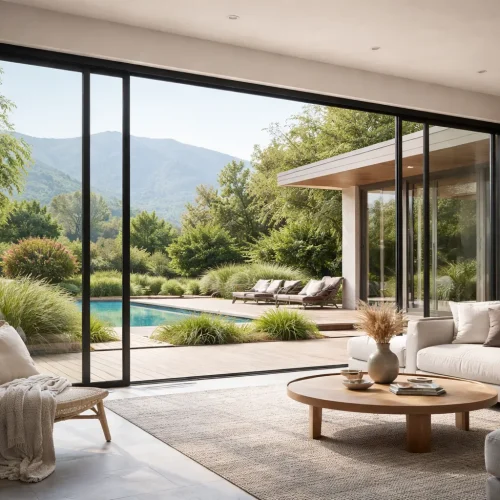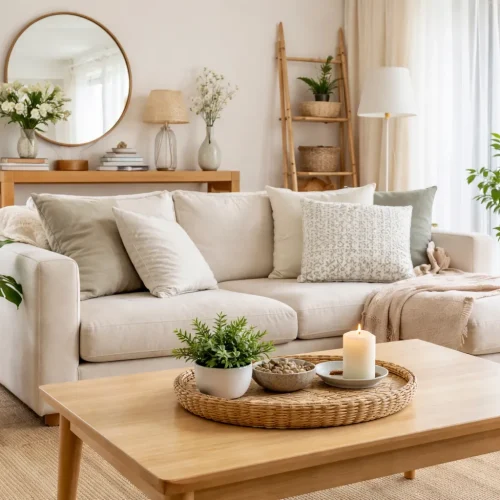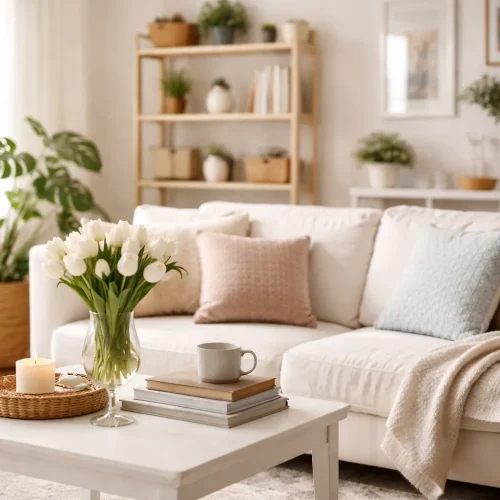
A house may be beautifully furnished, newly painted, and architecturally impressive but lack something. That something isn’t necessarily about size or structure it’s about the elements that leave you feeling like you can breathe when you come through the front door. The details, from scents to textures, have a tendency to turn a room from staged to lived-in.
One of the easiest but most effective methods to establish this sense is with bedroom cushions. They provide an inviting touch of softness, causing your own space to be likened to a sanctuary. But it’s more than just plopping a few pillows across the bed it’s about selecting forms, textures, and hues that reflect your personality and contribute to visual balance in the room. The goal is to blend comfort and style so the moment you step inside, the space feels uniquely yours.
Layer with Textures That Invite Touch
Visual appeal is only half the battle when it comes to turning a house into a home. The texture of a surface under your fingertips is equally important. Consider chunky knit throws on the couch, velvet pillow coverings on the bed, or a woven rug beneath your feet. Texture gives depth to a room, causing it to feel warm and inviting instead of two-dimensional and sterile.
Layering textures is also an opportunity to experiment with contrast. Combine crisp cotton bedding with a faux fur throw, or sleek leather chairs with a cushy linen pillow. Not only does this create visual interest, but it invites interaction. People are drawn naturally to things that feel good to the touch.
Warm Lighting for Instant Coziness
Lightning is a mood-setting element that most people don’t pay enough attention to. Harsh overhead lighting can leave even the best-looking room feeling stark, but warm, layered lighting makes it feel warm and inviting. Think of layering table lamps, floor lamps, and wall sconces so that you can shift the mood based on the time of day.
Warm-color bulbs are especially useful in setting a comfortable mood. In the bedroom, shun harsh, cool lighting instead; use soft light that encourages relaxation. A dimmable table lamp can do miracles for relaxing in the evening.
Personal Mementos That Tell Your Story
It is the feeling that the house belongs to an individual someone who has a history, interest, and memories. Having personal items like travel mementos, framed pictures, or inherited knick-knacks adds a personality to your place.
The trick is balance. You don’t want every shelf lined with mementos, only a few to provide guests (and you) with windows into the life experienced within these walls. Even something as mundane as an antique clock from a grandmother or a ceramic coffee mug handmade by someone can lend itself to layers of warmth and depth.
Scent: The Invisible Decor Element
Our ability to smell is directly linked to memory, so scent is an incredibly strong way to condition us to perceive a room in a certain way. A house that smells lovely will never fail to feel more welcoming.
Think about employing candles, essential oil diffusers, or even freshly baked snacks to fill your home with a signature fragrance. In bedrooms, relaxation-inducing scents such as lavender or chamomile can induce improved sleep, and in living areas, warm fragrances such as vanilla or sandalwood foster a soothing cocoon-like atmosphere.
Bring Nature Indoors

Plants are not just for aesthetics; they bring life to a room, both literally and metaphorically. The foliage tempers harsh lines and brings in a soothing, natural touch to your interiors.
You don’t require a green thumb to begin. Low-maintenance plants such as snake plants, pothos, or succulents can do well with little care. To add warmth, opt for pots made of natural materials such as terracotta or rattan to match the earthy texture of the plant.
Mix Old with New
Rooms that seem too “catalog-perfect” can sometimes be soulless. Blending in a few secondhand or vintage items imbues a home with a real, lived-in feel. That may be an antique wood side table alongside a contemporary, sleek sofa, or an antique mirror over a modern console.
The combination of old and new creates contrast and tells a richer story about your space. Each piece brings its own history, blending seamlessly into the ongoing story you’re writing in your home.
Seasonal Switch-Ups

Shifting small aspects with the seasons keeps your dwelling feeling new and attuned to your life. During the summer, replace heavy throws with light cotton, and add brighter hues with cushion covers or blooms. During the winter, layer in heavier fabrics, deeper colors, and more pungent fragrances.
This adaptability allows your dwelling to develop along with you, capturing not only the season beyond but also the moods and recollections manifesting within.
The Art of the “Unpolished” Touch
Perfection is not always appealing. At times, the beauty of a home is in its imperfections: the ever-so-slightly askew pile of books on the coffee table, the throw blanket loosely overhanging the armchair, or the combination of patterned and plain pillows that do not exactly match but somehow complement each other.
These imperfections add up. These small imperfections can make a room feel more inviting. They indicate that the space is intended to be occupied, not simply admired from afar.
A Home That Speaks to You
Ultimately, what it takes to make a house feel like home is to create an environment that speaks to who you are and how you want to feel. Whether that is the soft comfort of cushioned bedroom corners, the soft light of ambient illumination, or the warmth of an inviting scent, these little bits of detail can completely alter the feel of a place.
A space that’s well-planned doesn’t merely look good, it feels good. And when your house is a place that welcomes you with affection and comfort, that’s the moment you know you’ve succeeded.












